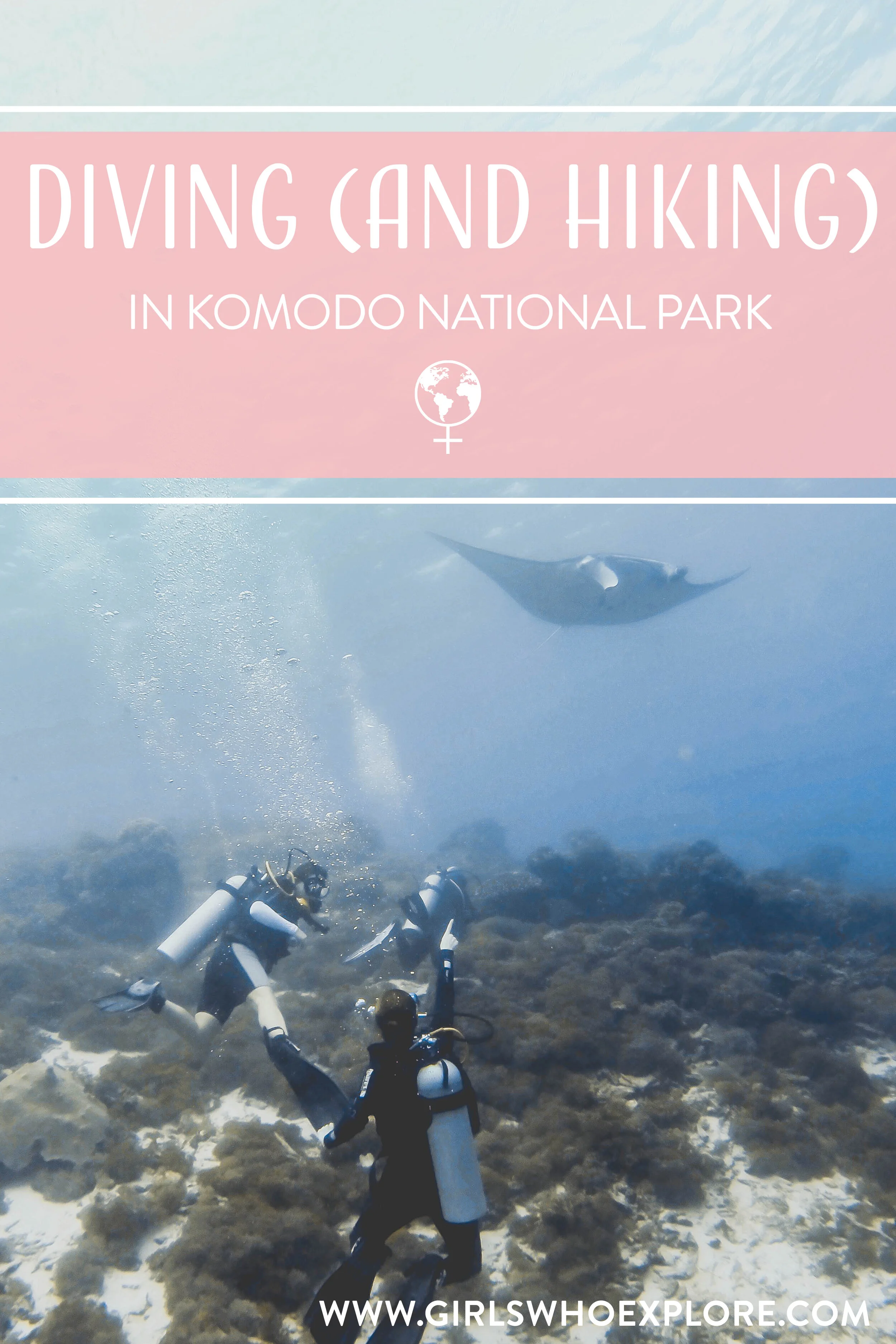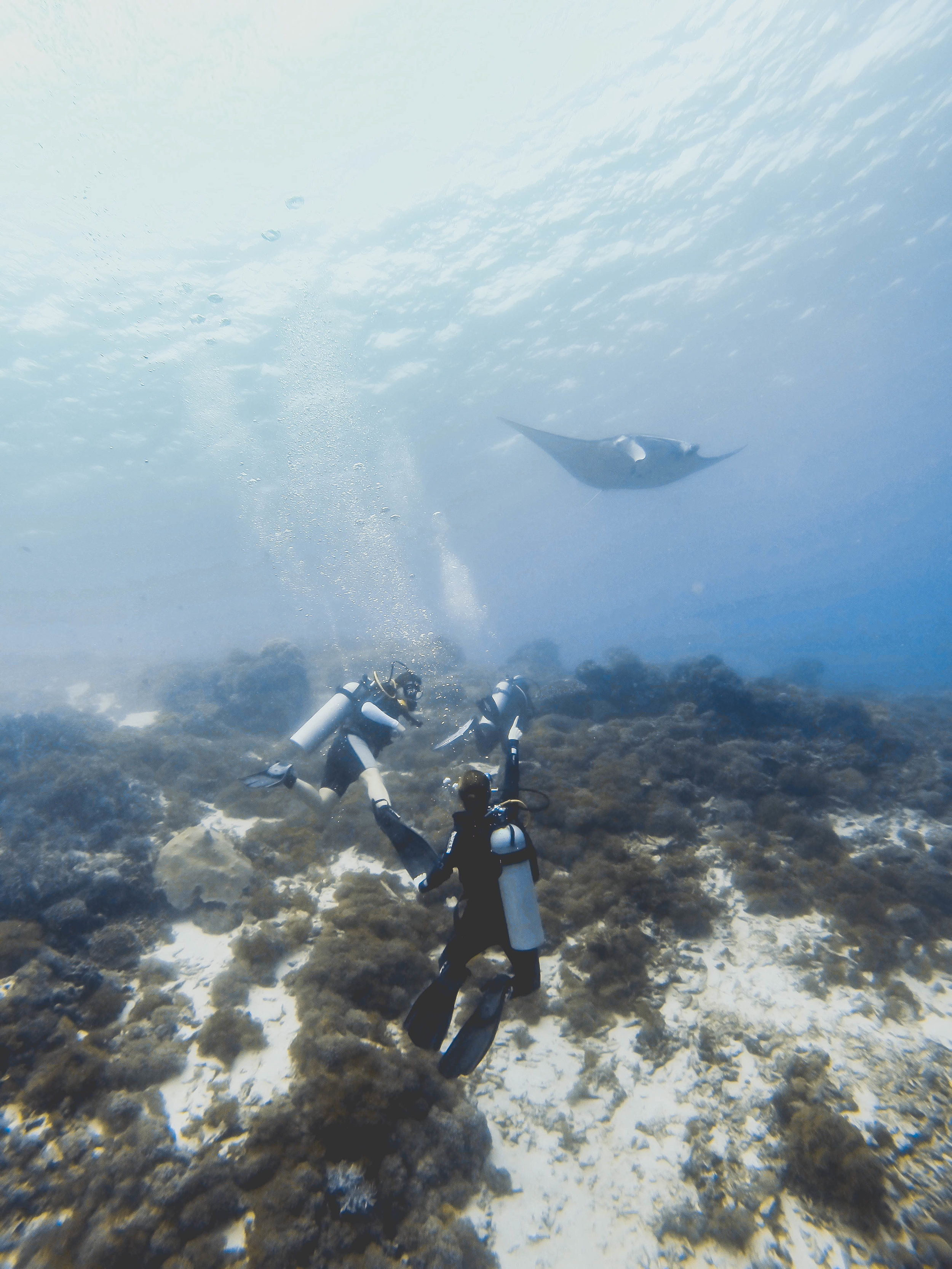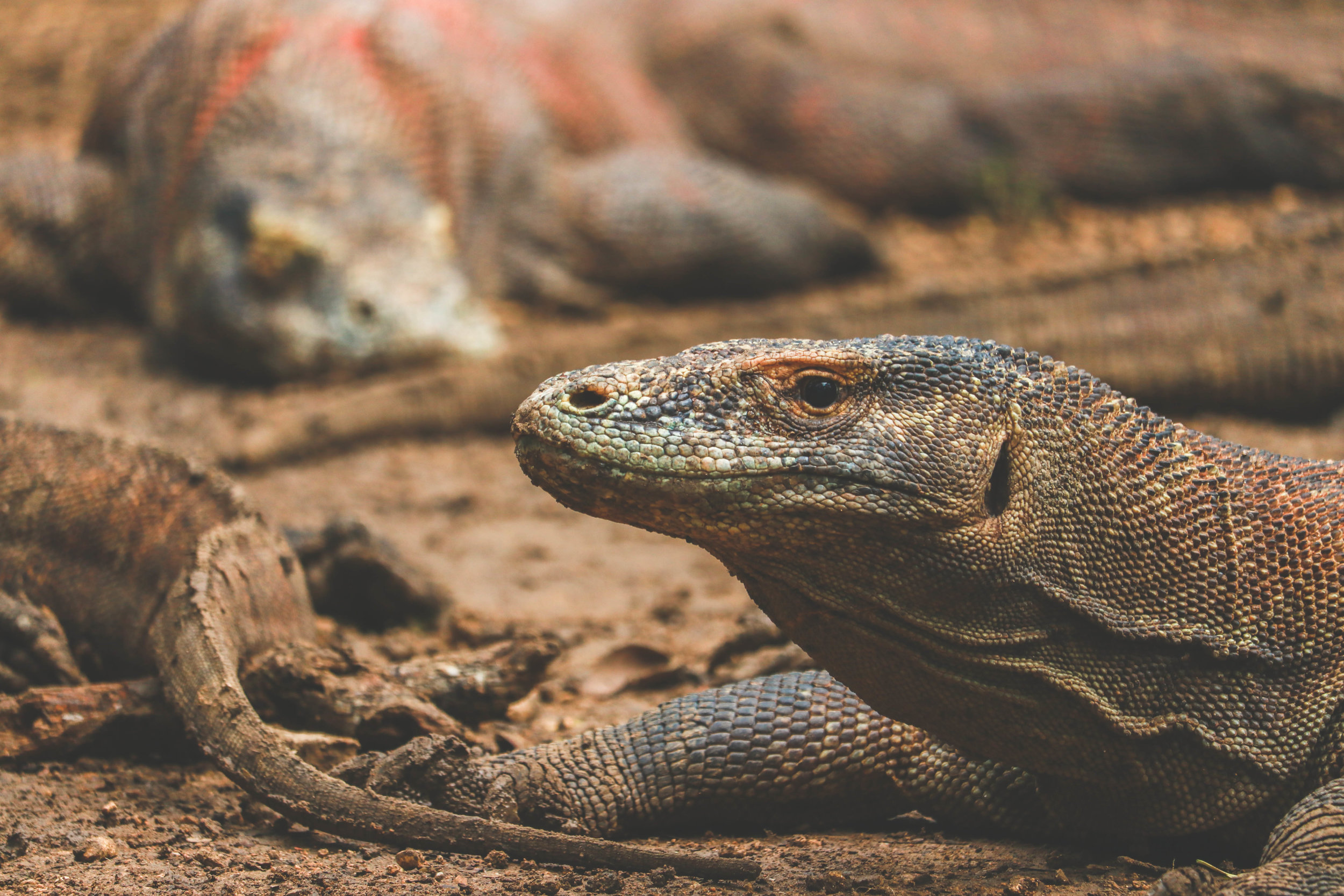Komodo National Park
Getting to Komodo
Getting to Komodo is as easy as a short flight from Denpasar to Labuan Bajo Airport (LBJ). The main downtown area is just 10 minutes away. You will be bombarded by eager taxi drivers upon exiting the airport - any driver is good, but don’t pay more than 50,000 rupiah.
The main road of Jl. Soekarno Hatta is right on the water. We stayed in Bajo Nature Backpackers, but there are loads of options. Take a walk along the main drag when you get there to browse some dive shops for packages you’re interested in.
Dive Komodo
Among the many reasons to fly out to Komodo, we were compelled by the marine wonders within the national park. We chose to go on a day trip with a company our friend recommended, Dive Komodo. In addition to day trips, they also offer overnights and multi-day trips for those who would like to spend more time underwater. When you book your trip, you'll also give them Rp 150,000 per person for the National Park entry fee (one-day general entry).
On certain days, they can also arrange for an afternoon “dragon trekking” adventure on one of the islands. It takes a considerable amount of time to get out to the national park from Labuan Bajo, so if you have a limited amount of time, consider opting to see the dragons on the same day you go diving.
As is usual with diving, expect to get on the boat around 7am. The ride out to the dive sites takes about two hours. The early morning makes for some beautiful lighting, so be sure to sit up top where you can watch the passing boats as your cruise among the islands.
Our first dive was at the Coral Gardens. You descend into an wide open sand field and work your way towards the coral on the far edge. Along the way, you’ll probably spot some camouflaged sea rays, rogue upside-down jellies, and maybe some ornate pipefish in the sand. Once you’re in the coral garden, keep your eye out for turtles munching on the patches of sea grass!
Diving with Manta Rays
Upon begging and pleading, our guides agreed to take us to Manta Point for our second dive. Like any creature of the natural world, you’re not guaranteed to see manta rays, but diving at one of their cleaning stations gives you a good chance. Lucky for us, there were four. We spent the entire dive parked on the sandy slope watching the mantas glide through the waters - a truly magical experience.
Expect to return ashore around 5pm. You’ll head back to the dive shop, log all your dives on paper, and maybe book a second day of diving if you’ve really been enchanted.
Komodo National Park
Komodo National Park was established in 1980, and soon became a World Heritage Site in 1986. The park is a total of 1,817 square kilometers, including both terrestrial habitats and a marine park. The five main islands of the park are Komodo, Rinca, Padar, Gili Mota, Nusa Kode.
The climate of Komodo is mainly hot and dry with less than 800mm of rainfall per year. November is the hottest month of the year, while most rain falls between December and March during the northwest monsoon season. As a result of the particularly dry conditions, over 70% of the park is open savanna habitat consisting of tall grasses, and twiggy shrubs. Other than Komodo dragons, the park is home to 276 other species.
Komodo Dragons
Komodo National Park is the only place in the world where the dragons can be found, on the islands of Komodo, Rinca, Gili Motang, and a small part of western Flores. Sadly, they recently went extinct on Padar. Most companies will take you to Komodo or Rinca to see the dragons.
Reminiscent of dragons from high school biology class, Komodo dragons are the largest living species of lizard on the planet. They have no natural predators, which allows for their huge size of up to 90kg, and lifespan of 50 years or more. Dragons are cold-blooded so they need to lay out in the sun to regulate their body temperature. They are most active during the morning and afternoons, but not during the peak heat of the day as they have no method to cool down (we can sweat, they cannot).
Individual dragons are typically solitary, only becoming social during mating and feeding. When Komodo dragons need to eat, which is about once a week, they use strategy to take down the perfect meal. One dragon will attack a chosen deer, water buffalo, or sweaty tourist. The prey will effectively make an escape after being bitten, but with little hope of survival. Dragon saliva has high levels of lethal bacteria that infiltrates the battle wound. A few days later, the prey will die of infection, exhaustion, starvation, or most likely: a combination of all three. The dragon, having stalked the prey since the attack, now has dinner on a silver platter. Most large prey species can feel multiple dragons. So in general, when a prey is felled, there is a jurassic-park-esque buffet-style feeding frenzy where a who pack of dragons tears into a sweaty tourist. KIDDING - it’s very safe to see the dragons.
Dragon Trekking
Make sure you go with a park ranger. They know what they’re doing, you don’t know what you’re doing, and this is their home to show you. It costs about Rp 80,000, which really isn’t much to ask. You can either add it onto a dive trip for the afternoon, or you can book and entire day adventuring one of the islands.
We opted for just an hour or two on Rinca, and we had more than enough time to observe the local dragons. The trekking loop brought us through some of the forested areas, across the shrubby plains, and up the main peak for a stunning view of the surrounding area.







